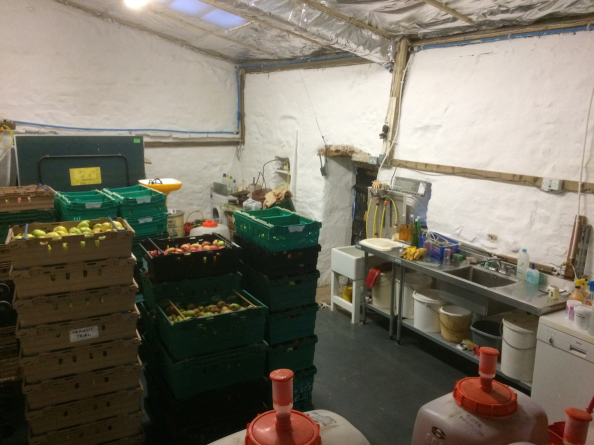
Cider
The main varieties of cider apples we use are Major; Tremlett’s Bitter; Tom Putt; Dabinett; and, in a good year, Kingston Black and Brown Snout. The principal varieties are detailed on each label.
As well as these main varieties, other apples (particularly russets) are used to provide balance and complexity.
We also make occasional perries using pears from the National Trust property at Acorn Bank near Penrith.
Sometimes cider is blended with a little perry for a well-balanced cider called “Orchard Magic”.
Making pure craft cider is in essence a very simple process. Just mill the apples and press them, pour the juice into a container and let it ferment. When it has fermented, bottle it and it is ready to drink.
Occasionally we may add a cultured yeast, also some enzymes to clarify it. We also use sulphite to kill any unwanted bugs, but try and keep it to a minimum. After fermentation, we may blend the ciders to create a well-balanced product.
The really complicated bit is the chemistry of fermentation, which we leave for nature to work its magic. All our ciders are fermented cold – this means it takes ages before they are ready to drink, but gives a much finer flavour.
We absolutely do not add water or sugar. Our cider is pure fermented juice.
Apple juice
Our apple juice is similarly simple. To freshly-pressed pure apple juice, we add a bit of Vitamin C and then carefully pasteurise to preserve the juice and its flavour.
We press apples for juice as they ripen in store. Early dessert and dual-purpose apple juices are naturally well-balanced and are sold as single-variety juices; typical varieties are Katy, Lord Lambourne and Tom Putt. Later dessert varieties can be sweeter and may be blended with sharper apples.